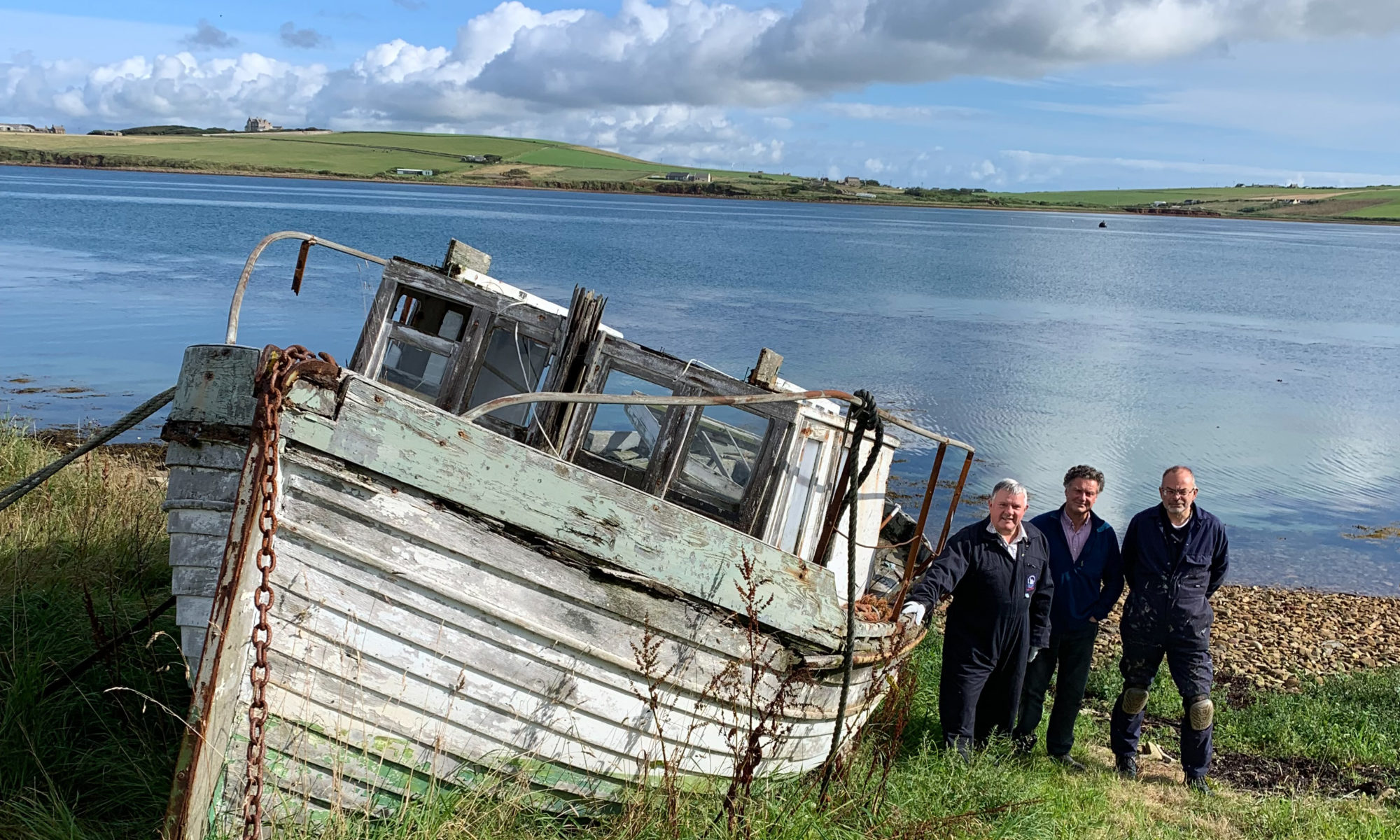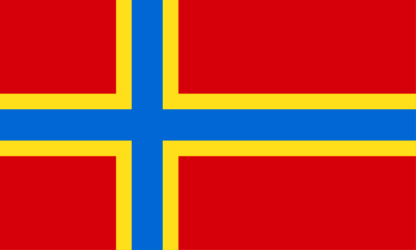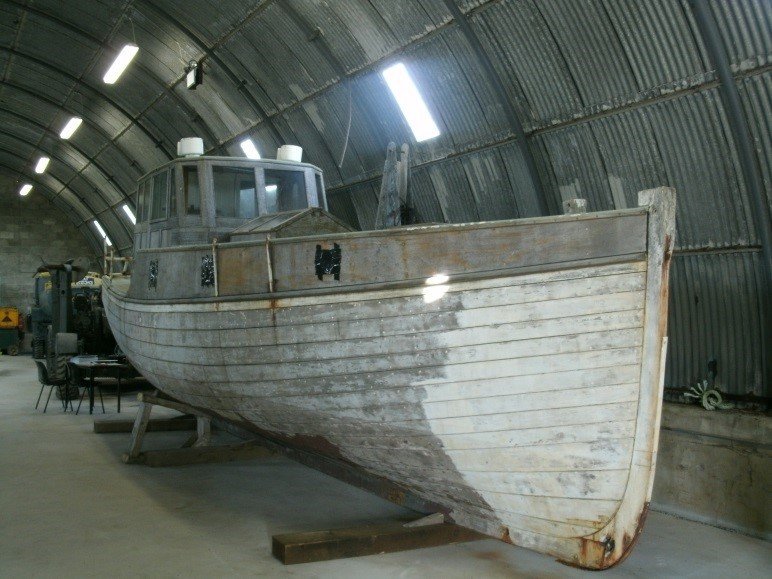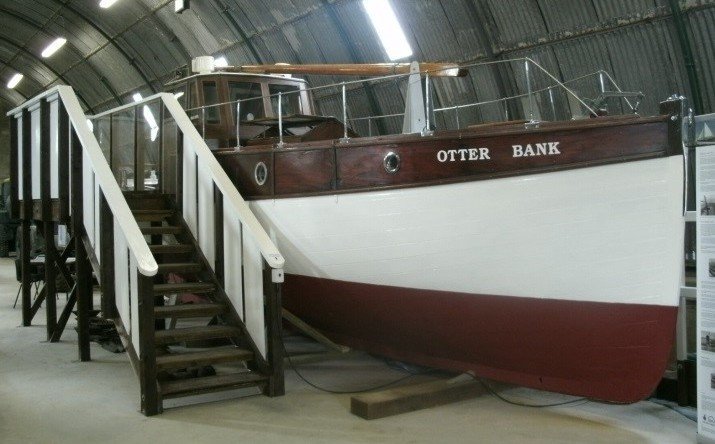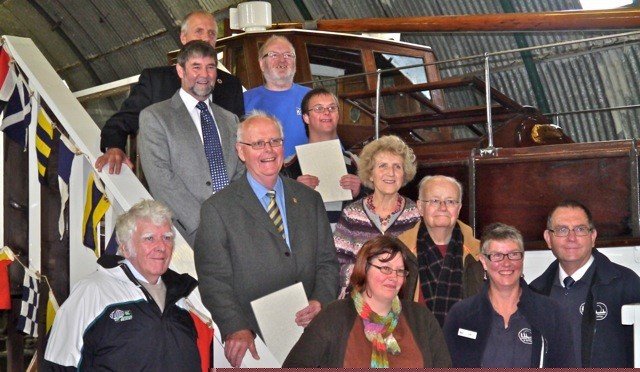A Friends of the Orkney Boat Museum Project. This project was carried out by the OHBS predecessor, the Friends of Orkney Boat Museum.
The Otter Bank provided a floating banking service to the north isles of Orkney from 1962 to 1970 and is remembered with great affection across the islands. The service ended in 1970 and the boat passed into private ownership outside Orkney. When her last owner put her up for sale in 2007, she was bought by the OIC’s museum service with funding from the Heritage Lottery Fund and the National Fund for Acquisitions. The Friends of Orkney Boat Museum and NorthLink Ferries provided support to bring her home and she is now on display at the Scapa Flow Visitor Centre at Lyness.
She lay outside at Hatston for several years before the museum service arranged to transport her to Lyness where she is now. She was in poor condition but a team of volunteers and the staff of the museum spent three summers from 2011 to 2013 renovating her to bring her back to her former state. Costs were kept to a minimum as the majority of the labour was provided by volunteers and museums staff and most of the materials provided by local businesses. However, some specialist work and materials had to be purchased. As one of its last acts before it handed on the reins to the Society, the Friends donated £3,200 to pay for these specialist costs. When the team started work, the boat was looking rather the worse for wear after years out in all weathers without a new coat of paint.
Jude Callister, the custodian at Lyness, organised the project and arranged for a volunteer from Portsmouth (who has been working on Von Reuter’s barge which sits alongside the Otter Bank) to measure her and draw up accurate plans of the hull. Ian Richardson, a local boat-builder, inspected the boat and drew up a list of what needed to be done and what materials should be used.
In the first summer the team concentrated on the hull, in the second summer the decks and cabin, and in the third summer the inside. As part of the project the team even produced two viewing platforms and a display board. The work was at times hard and dirty but every so often we would look at a photo of the Otter Bank when we started and compare it with how she was now and smile proudly. At the end of the summer of 2013, we had finished and held a ceremony to mark the completion. Among those attending were local and national media, most of the folk who had worked on the boat, several councillors from OIC and even several people who had served on her as bank staff in the 1960s. I was nervous about the possible reaction of the former bank staff. However, they had a good look over her, smiled and said, ‘Yes, that is exactly how we remember her.’
